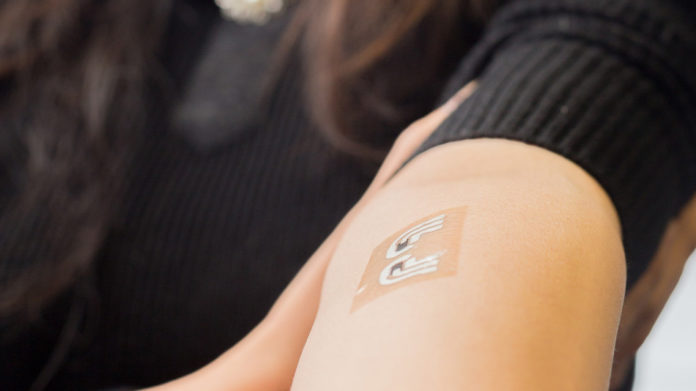Engineers create a temporary tattoo that tests blood sugar

A temporary tattoo uses electrical impulses to measure glucose levels.
Amay Bandodkar, a researcher at the University of California, San Diego, has created a flexible sensor that uses a mild electrical current to measure glucose levels in a person’s body. Measuring blood sugar levels multiple times a day is vital for diabetes patients because it shows how well their body is managing their disease as well as the dose of insulin they require, if they need any at all. But because many people find needles unpleasant, they tend to avoid measuring their levels, which puts them at risk of developing serious medical complications. The new device is painless — It contains electrodes printed on a thin tattoo paper that patients can even dispose after use. “Presently the tattoo sensor can easily survive for a day,” Bandodkar said in a statement. “These are extremely inexpensive — a few cents — and hence can be replaced without much financial burden on the patient.”
The tattoo has already provided accurate glucose measures for seven healthy patients, the team reported in a recent issue of the journalAnalytical Chemistry. The patients, all male non-diabetics between the ages of 20 and 40, wore the tattoos before eating a sandwich and drinking a soda. Following the carb-rich meal, the tattoo recorded the spike in each patient’s glucose levels as accurately as a traditional finger-stick device. The tattoo is a few steps away from providing the numeric value of glucose levels, so scientists have to remove and analyze the it in order to retrieve its measurements. Eventually, Bandodkar said the tattoo will have “Bluetooth capabilities to send this information directly to the patient’s doctor in real-time or store data in the cloud.”
The researchers hope the tattoo will eventually be used to monitor levels of other compounds in the blood, like metabolites, medications, or alcohol and illegal drugs. Whatever the application, the less needles the better.

